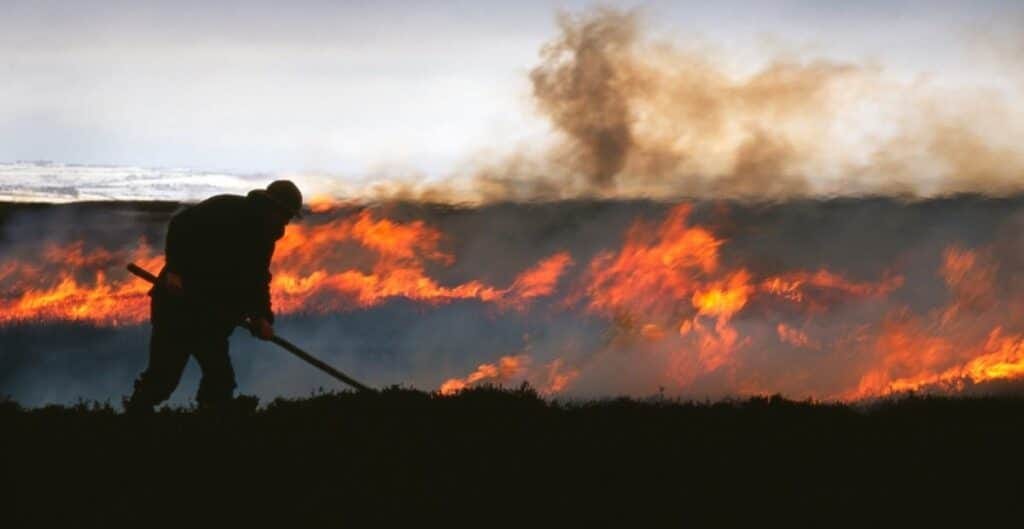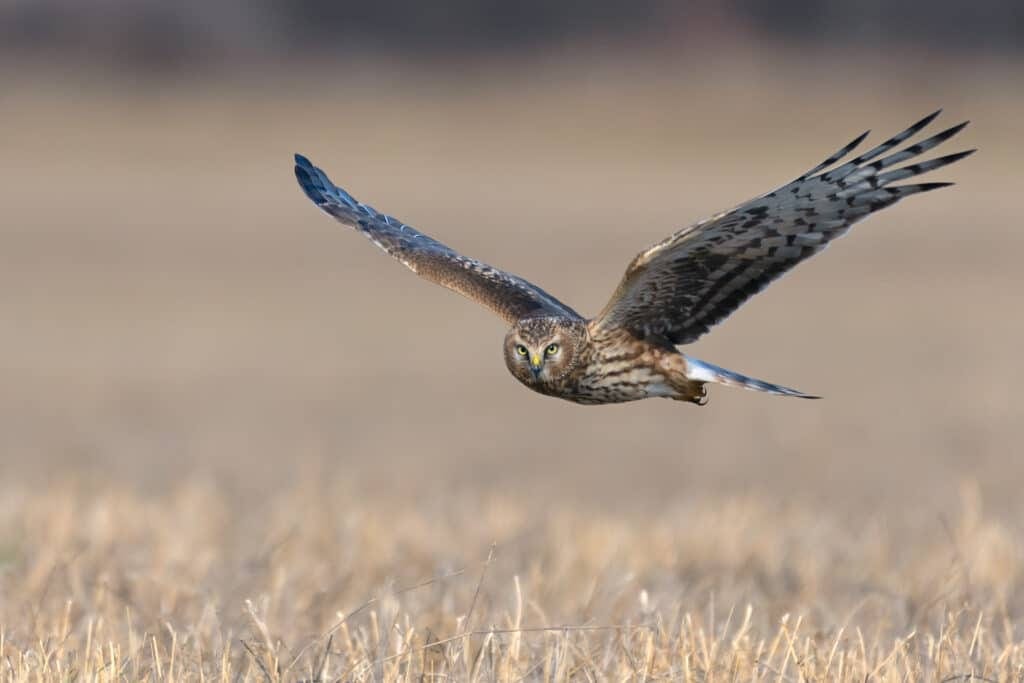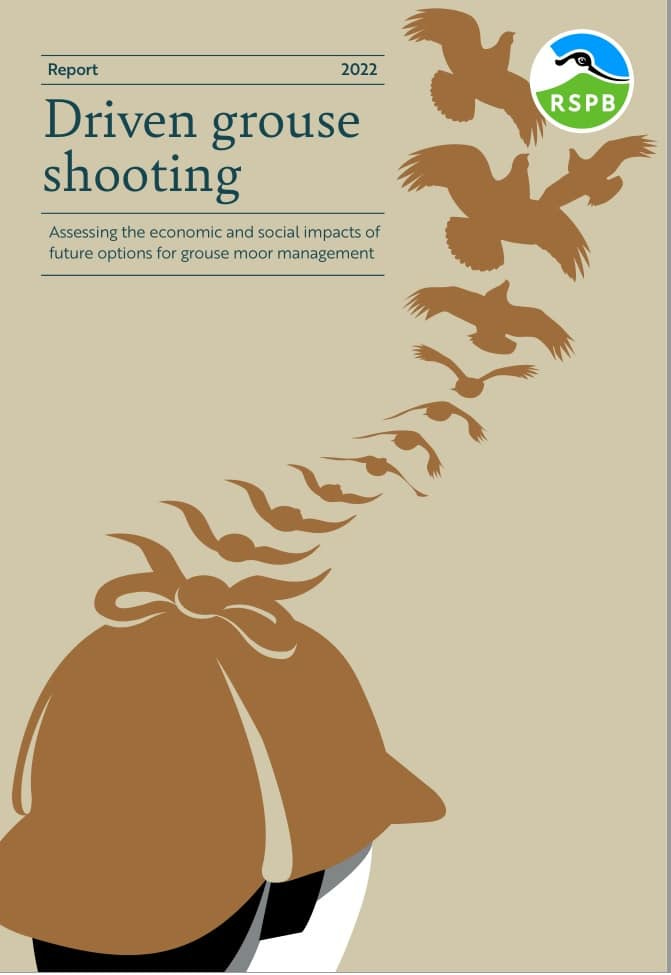RSPB: The Economics of Driven Grouse Shooting Report
The RSPB (the "UK's largest nature conservation charity, inspiring everyone to give nature a home and secure a healthy environment for wildlife') recently published a report called 'Driven Grouse Shooting - Assessing the economic and social impacts of future options for grouse moor management'
Or did they?
Curiously, this detailed and over 100-pages long report with the RSPB logo on the cover and the words Royal Society for the Protection of Birds at the head of each page, begins with a Disclaimer which says "This report was commissioned by the RSPB and prepared by Matt Rayment as an independent consultant. It presents the findings of research and analysis by the author. Although welcome comments on a draft were received from the RSPB, it does not represent RSPB policy."
A neat way to sidestep the inevitable whining from the grouse shooting industry of 'bias' from the 'UK's largest etc etc' by flagging distance from the outset?
I'm perhaps reading too much into this, but if so isn't it about time the RSPB stopped giving a damn about the complaints of a bunch of wealthy estate owners who prioritise profit above all else and are responsible for widescale illegal persecution of birds of prey and the slaughter of Red Grouse on an industrial scale?
Which, of course, puts my own 'pro-wildlife' bias front and centre and summarises my (and Protect the Wild's) feelings towards this horrible industry, just in case anyone was wondering...
The Report
Formalities over, what (in brief) does this report do?
In a nutshell, using case studies alongside the 'reliable' anecdotes of shooting lobbyists, it looks at the likely economic and environmental impacts of three policy options on Driven Grouse Shooting, the 'sport' where lines of beaters being paid minimum wage drive unsuspecting birds towards shooters bravely hiding in butts.
The author posits these scenarios as 'Business as Usual' (BAU), 'Grouse Moor licencing' (which the RSPB announced in 2020 was its favoured way ahead), or a full 'Ban on Driven Grouse Shooting'.
Again curiously, having laid out what he plans to discuss the author inserts another disclaimer (on Page 5), saying
"The analysis has been constrained by evidence gaps and uncertainties regarding many aspects of grouse moors and their impacts. These include basic data on the number and area of grouse moors, employment and sector revenues, as well as scientific uncertainties, data gaps and different interpretations of evidence regarding biodiversity, climate and ecosystem service effects".
Any prospective reader of what is an undoubtedly well-written and generally thoughtful report should let that paragraph sink in first.
The quite frankly ridiculous thing about grouse moors is how - after 160 years of merrily blowing birds out of the sky for fun - there is still so much uncertainty surrounding them.
As the author acknowledges, we don't know exactly how many grouse moors there are and how much land they control ("Best estimates are that there are around 310 estates engaged in grouse moor management in Great Britain (190 in England, 120 in Scotland), managing between 0.8 and 1.8 million hectares of land for grouse shooting (0.2-0.4 million hectares in England, and 0.5-1.5 million hectares in Scotland)), no certainty on how many jobs they provide (numbers appear to be inflated by marshalling everyone who works on an estate in whatever capacity into the economic pot marked 'driven grouse shooting), there are no requirements to tally how many Red Grouse they kill between them (which you might think is something we ought to know by now), and of course no requirement to keep a running total of the vast numbers of foxes, mustelids, and corvids their employees are tasked to kill simply to keep grouse alive long enough to be shot at.
Estates aren't even totally clear about where their revenues come from (which would be a pre-requisite for an economic report surely?), the author saying that while driven grouse shooting estates (which charge an obscene amount to gun down grouse) appear to make a loss, there is yet more uncertainty because as grouse moors use sheep to keep vegetation down they can therefore claim various subsidies from the taxpayer which they're not obliged to reveal.
On top of everything, no one really knows just how much illegality underpins the driven grouse industry. If we think fox hunting is all smoke and mirrors, there's a precious quote on Page 19 that underlines just how ridiculous even trying to accommodate estate owners is:
"... intensive management of grouse moors can include illegal practices such as the killing, injuring and disturbance of raptors, undertaking muirburn outside the designated season or without giving due notice to neighbouring estates, and using medicated grit contrary to the Veterinary Medicines Regulations 2013. At present few convictions arise from these actions prohibited by law on account of difficulties in obtaining a sufficiency of admissible evidence to support a prosecution. This is especially true for the illegal killing of raptors..."
It's all a bit rum, really. Chuck in smoke pollution, lead shot pollution, the tracks cut across moors so that shooters don't have to stumble more than a few yards to their hidey-holes, and that vast areas of what the public is led to believe are 'national parks' are in fact privately owned grouse farms, and you have to ask whether in 2023, in the midst of climate and biodiversity crises, it's worth having a debate at all. Shouldn't we simply be doing the right thing and skipping forward to 'BAN' and getting rid of the entire opaque and crime-ridden enterprise forever?

Ego-driven owners and jobs
There appear to be two reasons why we don't simply skip forward (three if you count the bewildering reluctance of our largest nature organisations to stand up for Red Grouse): the owners get a kick out of showing off their moors and the tonnage of waddling grouse they produce (through legal and illegal means), and jobs.
We can forget about discussing owners. The RSPB's own analysis in 2007 concluded that climate change models suggested that "Red Grouse will be lost from England and remain only in northern Scotland by the end of the 21st century". That estimate is probably due for some foreshortening now as we head into a world where not far from the nation's grouse moors we have the warmest sea temperatures ever recorded and 2022 saw the UK swelter above a previously unthinkable 40c. Desperately sad for the wildlife that still calls the uplands 'home', but few outside of their own circles would shed any tears for individuals or corporations that sell animals as live targets losing that particular income stream. Besides, it's likely as the land alternately drowns and bakes in increasingly unfavourable conditions more and more 'grousers' will shrug, sell their estates for carbon offset or storage schemes, and retire to a life of luxury anyway.
But not so their employees who are on average to low wages and are sometimes in tied housing. Quite rightly, we should all be concerned about jobs. I may not like what they do, but I'm not going to wish unemployment on anyone.
But how many jobs are actually provided by driven grouse shooting?
Given the sleight of hand alluded to above, the author has a caveated stab saying on Page 79:
"The best available estimates suggest that the sector and its supply chain support approximately 4,000 FTE jobs in the UK (less than one tenth of one percent of rural employment), although this may be an overestimate."
Yep. Including the supply chain just 0.09 of rural employment - and even that may be 'an overestimate'.
For that relative handful of jobs governments, lobbyists, and nature organisations circle each other warily while impossibly huge numbers of animals and birds are slaughtered every year on behalf of a few people who like to kill stuff.
And those aren't jobs that would necessarily be 'lost' anyway. As the report says on Page 68:
"The case study examples show that former grouse moors at Geltsdale [now an RSPB reserve] and Langholm [which was bought by local people and is now part of the Tarras Valley Nature Reserve] have replaced jobs lost for gamekeepers with new jobs in conservation and tourism"
Putting forward an argument for 'business as usual' was always pointless, but data like this has to make you ask - again - why don't we just phase this goddam industry out starting today...

Licencing
Ah, the 'licencing lifeline'. The way forward according to many conservationists and commentators on shooting (though, notably, as the report explains not the preferred option of estates who hate being told what to do and find filling out forms a particularly arduous duty).
Licencing (which the author 'assumes' won't be simply a virtual piece of nothingness a la the General Licence scheme, which Wild Justice memorably described as the "casual licensing of casual killing of birds“) would, according to Page 81, mean "Little change in practice required for legally compliant moors, but should help to reduce illegal activity".
Surely the reason for these decades of debate is that in fact most moors aren't legally compliant. And given that there are no plans to ramp up enforcement, no indication that estates are ever going to fess up to wildlife crime or shop others for it, how will 'illegal activity' be reduced?
All that will happen (in our opinion anyway) is that estates will use a licencing system to say 'We've done what you wanted, now sling your hook', giving themselves the excuse to never change again (until, as noted above, forced to by climate change). Licencing won't make a jot of difference to how many grouse are killed, or do anything to halt the 'legal' killing of those piles of native animals that estate owners despise and spend all year annihilating. The industry will be handed a stamp of legitimacy, and what is already an anachronistic and incredibly selfish way to 'manage' one of the most unique habitats in the UK will roll on into the future collecting cheques and putting two fingers up to the increasing number of people who just want this hateful thing to end.
Just ban it
It's entirely possible that critics of Protect the Wild (and we can count even 'pro-birds' folk amongst that group) will say that no matter what the report concluded we would say 'BAN IT' anyway.
That's not actually entirely true. We are opposed on moral and ethical grounds to the shooting industry as a whole, but that's not because we randomly picked a cause to support out of the air.
I have been a birder for decades, and the team at Protect the Wild have collectively spent much of our lives working for and loving wildlife. The destructiveness, cruelty and lack of conscience of the industry would be enough, but the driven grouse industry especially breaks the law on an epic scale, is one of the least transparent and least regulated industries in the UK, and has done nothing about its unreconstructed supporters who attack and terrorise 'antis' online.
This is, as I said at the top, a well-written and generally thoughtful report. The most violent of shooting supporters will make the usual threats, the estates will faux-sigh about how they're being picked on, the RSPB will (rightly) say they have devoted yet more time and resource to trying to solve the 'driven grouse shooting' problem, and a few people will read it in its entirety and reach their own conclusions.
When all is said and done though, as things stand Hen Harriers are being killed illegally, thousands upon thousands of traps and snares are lying in wait across thousands and thousands of hectares of moorland, and next August a bunch of gunmen will begin the annual slaughter of up to half a million birds in a one-sided 'sport' where those birds have no chance to escape.
Reach your own conclusions of course, but don't be at all surprised that we won't be changing ours.




